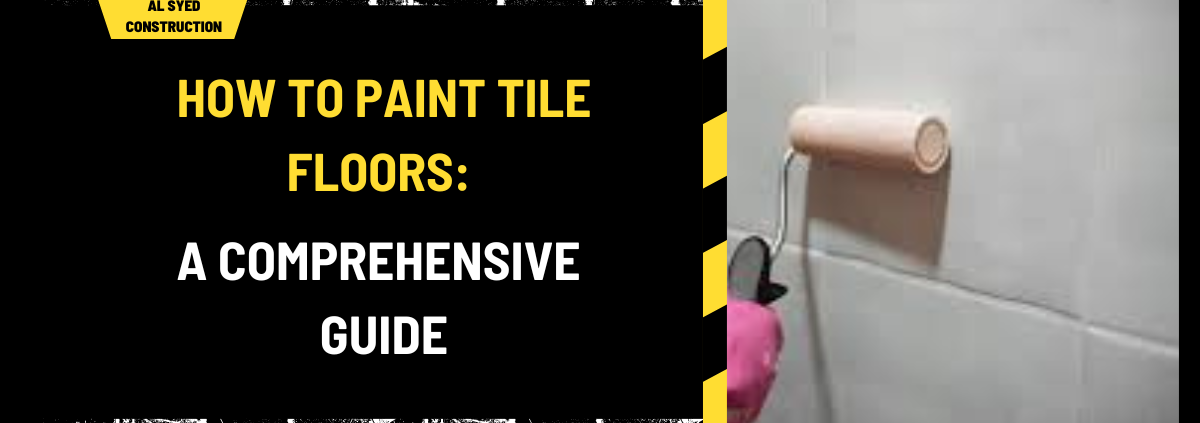How to Paint Tile Floors: A Comprehensive Guide
Painting tile floors is an excellent way to breathe new life into your space without the expense of a full remodel. Whether you’re dealing with outdated ceramic tiles or looking to add a splash of color to your room, painting can be a cost-effective and stylish solution. In this guide, we will walk you through the entire process of painting tile floors, ensuring a smooth and durable finish.
Choosing the Right Type of Paint
When it comes to painting tile floors, selecting the appropriate paint is crucial for achieving a long-lasting finish. Epoxy-based paints are highly recommended due to their durability and resistance to moisture and stains. Latex-based paints are also an option, though they may require a more frequent touch-up and are less durable compared to epoxy. Always opt for paints specifically formulated for floors to ensure better adhesion and longevity.
Preparing the Tile Surface
1. Clean the Tile Thoroughly
Before starting any painting project, it is essential to clean the tile floor thoroughly. Use a mild detergent and warm water to remove any dirt, grease, or grime. For stubborn stains, a mixture of vinegar and baking soda can be effective. After cleaning, rinse the floor with clean water and allow it to dry completely.
2. Repair Any Damage
Inspect the tile surface for any cracks or chips. Fill any cracks or holes with a tile repair filler or caulk. Smooth out the filler with a putty knife and allow it to dry according to the manufacturer’s instructions. Once dry, sand the area lightly to ensure a smooth, even surface.
3. Sand the Tile Surface
Lightly sand the tile surface using a medium-grit sandpaper or a sanding block. This step is crucial as it helps the paint adhere better to the tile. Ensure that you sand evenly and cover the entire surface. After sanding, clean off any dust with a vacuum and a damp cloth.
4. Apply a Primer
Applying a high-quality primer is essential to ensure proper paint adhesion. Choose a primer specifically designed for tile surfaces. Use a roller or a brush to apply an even coat of primer over the entire floor. Allow the primer to dry completely as per the manufacturer’s recommendations.
Painting the Tile Floor
1. Choose the Right Tools
For an even and professional finish, use high-quality paint rollers or brushes. A roller is ideal for large, flat areas, while a brush can be used for edges and corners. Ensure that your tools are clean and free of any debris before use.
2. Apply the First Coat
Begin by applying the first coat of paint using your chosen tools. Start in a corner of the room and work your way towards the exit to avoid stepping on freshly painted areas. Apply the paint in thin, even coats to avoid drips and ensure smooth coverage.
3. Allow the First Coat to Dry
After applying the first coat, let it dry completely. The drying time will depend on the type of paint used and the room’s ventilation. Typically, epoxy paints require around 24 hours to dry, while latex paints may dry faster.
4. Apply a Second Coat
Once the first coat is dry, apply a second coat of paint for a more opaque and uniform finish. Follow the same process as the first coat, ensuring even application. Allow the second coat to dry completely before proceeding.
Sealing and Finishing
1. Apply a Sealer
To enhance the durability of your painted tile floor, apply a clear sealer once the final coat of paint is dry. Sealers protect the paint from scratches, stains, and wear and tear. Use a sealer recommended for the type of paint you used. Apply the sealer with a clean roller or brush, and follow the manufacturer’s instructions for application and drying times.
2. Allow the Floor to Cure
After sealing, allow the floor to cure fully. This curing process can take several days, depending on the type of paint and sealer used. Avoid walking on the floor or placing any furniture on it until it is completely cured to ensure the best results.
Maintenance Tips
To keep your painted tile floor looking fresh and new, follow these maintenance tips:
- Clean Regularly: Use a mild detergent and a soft mop to clean the floor regularly. Avoid abrasive cleaners that can damage the paint.
- Address Spills Immediately: Wipe up any spills or stains as soon as they occur to prevent them from setting.
- Use Area Rugs: Place area rugs or mats in high-traffic areas to protect the painted surface from wear and tear.
Conclusion
Painting tile floors is a practical and cost-effective way to update your space. By choosing the right paint, properly preparing the surface, and applying the paint with care, you can achieve a stunning and durable finish. Follow these detailed steps to ensure a professional-looking result that will enhance the beauty of your floors for years to come.




